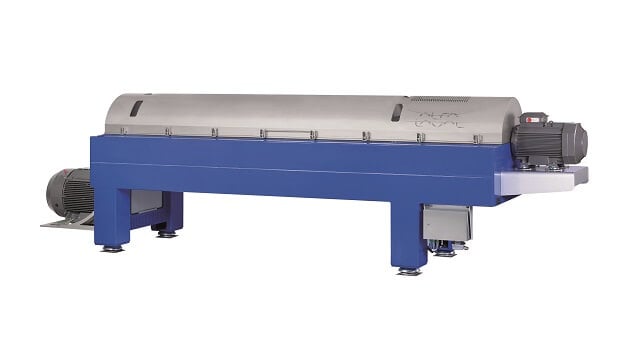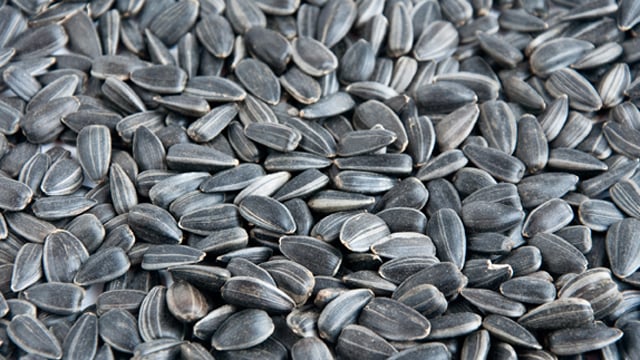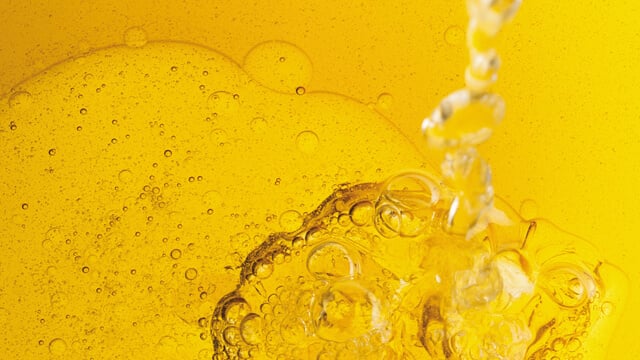Vegetable oils
Alfa Laval PONX decanter centrifuges are well known in the edible vegetable seed oil industry, installed in oil mills and refineries all over the world. PONX 2-phase decanter benefits from many years of tradition and experience – we have kept on improving our horizontal centrifuges and decanter product range, enabling our customers to enhance their recovery and clarification process of valuable, pressed, crude seed oils in the most efficient manner possible. The product range is completed by the CONX family, a 3-phase decanter range, used to purify used cooking oils before further processed downstream or to recover a valuable fat/oil fraction from sterilized kitchen waste, e.g. to produce biodiesel.

Increase yield and reduce energy and operation costs:
- Excellent clarification (2-phase) and purification (3-phase)
- High recovery rate
- High cake dryness (DM) and low oil level (FiDM)
- Highly customizable for your specific application requirement
- Compact, reliable and robust design with wear protection
- Available for up to 130oC feed temperatures
The high-performance PONX and CONX decanter centrifuges offer high recovery rate with low energy consumption compared to other solutions. With a fully enclosed operation, you avoid product contamination or spillage. Operation is automated, minimizing manual labour input. Moreover, the operation also requires no consumables, further lowering operation costs.

PONX decanters
For pressed seed oil clarification
- Food grade/technical grade
- Products up to 130°C
- Easy to replace Tungsten Carbide Wear protection
- 2-phase separation
- Seals and gaskets in contact with product are per default of Viton/FKM also available with FDA certification.
CONX decanters
For food kitchen waste and grease traps
- Used cooking oil
- Products up to 100°C
- Easy to replace Tungsten Carbide Wear protection
- 3-phase separation
- Seals and gaskets in contact with product are per default of Viton/FKM.

Decanter Centrifuge Operation
Separation takes place in a horizontal, cylindrical solid bowl equipped with a screw conveyor. The feed is led into the bowl through a stationary inlet/feed tube [2] and smoothly accelerated by an inlet distributor – the feed zone [29]. Centrifugal force causes sedimentation of the suspended solids inside the bowl [7]. The conveyor [8] rotates in the same direction as the bowl, but at a different speed – called the differential speed. This difference moves the solids to the conical end, where these solids are lifted out of the liquid level (pond) into a dry zone (beach), where the capillary liquid can be drained centrifugally, before being discharged through the solids outlet [26] into the casing. Separation takes place over the entire length of the cylindrical part of the bowl and the clarified liquid(s) leave(s) the bowl by flowing over an adjustable weir (dam plate) into the casing.
Design
Alfa Laval Protein decanter centrifuges are specially designed with a focus on performance, reliability, efficiency, easy access and low noise level. The rotating assembly [7, 8, 9] is mounted on a compact, welded box beam frame with main bearings [4] at both ends. The cover [6] is equipped with hinges to ensure easy access. The motors [1, 10] are mounted in-line on the decanter itself to ensure the smallest possible footprint. The bowl [7] is driven at the conical end by an electric motor [1] with V-belt transmission.
Each unit can also be adjusted on-site.
All product wetted parts – the bowl, conveyor, inlet and outlets – are made exclusively of high-quality, corrosion and acid-resistant duplex/stainless steels.
PONX and CONX differ in technical configuration based on your specific application requirements.
Range
NX decanter centrifuges are available in different bowl diameters from 280mm up to 720mm. In addition to the bowl diameter, the length of the cylindrical section as well as the angle of the conical section can be adapted to individual demands.
Drive system
The bowl [7] is driven by an electric motor and a V-belt [3] transmission drive. Power is transferred to the conveyer [8] by means of a gearbox [9]. An efficient back drive system is fitted to provide the necessary differential speed between the bowl and the conveyer. The sun wheel shaft of the gearbox is used to control the differential speed.
The most simple back drive system is called CT (Countershaft) and is available up to the medium-size NX 4450 series. The differential speed is fixed during operation, determined by main speed and pulleys. Adjustment is only possible when the unit is not running.
The more flexible back drive system is to use an electric motor – featuring a back-drive motor with an inline coupling to the gearbox to slow down the sun wheel shaft (braking energy obtained). Using a VFD (Variable Frequency Drive) makes it possible to adjust the variable differential speed during operation.
The advanced back drive system to obtain variable differential speed is called Direct Drive (DD) With the DD gear, the differential speed is controlled by applying energy (speed) to the sun wheel shaft.
